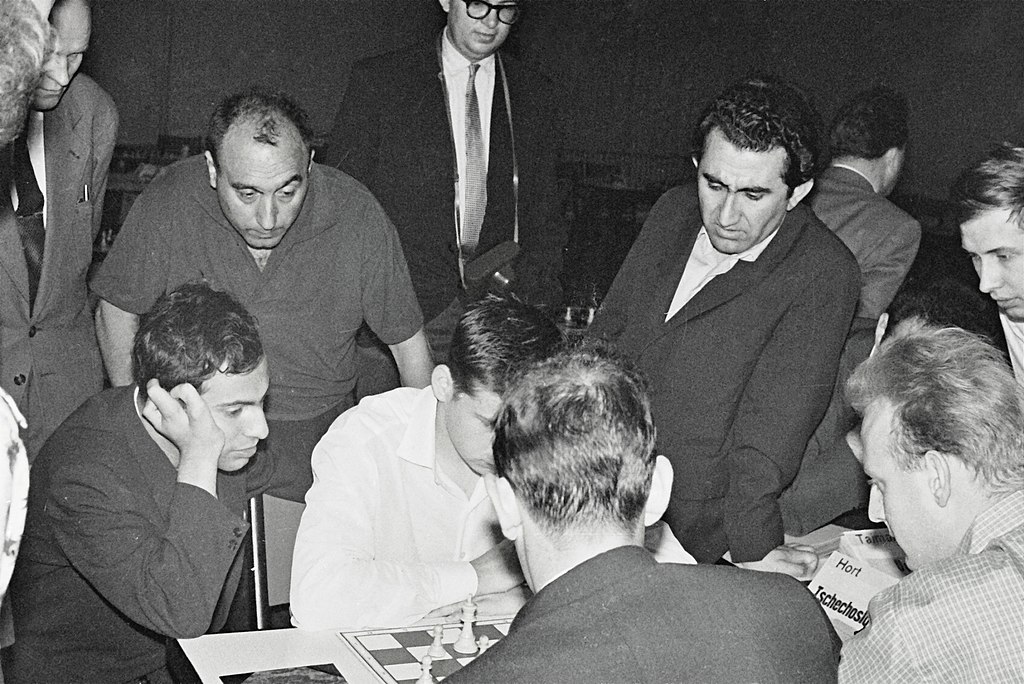


[Note that Jon Speelman also looks at the content of the article in video format, here embedded at the end of the article.]
During the Norway tournament, I streamed commentary a couple of times myself at twitch.tv/jonspeelman, but mainly listened to the official commentary by Vladimir Kramnik and Judit Polgar.
Both were very interesting, and Kramnik in particular has a chess aesthetic which I very much like. In his prime a powerhouse positional player with superb endgame technique, he started life much more tactically and his instinct is to sacrifice for the initiative whenever possible, especially the exchange: an approach which, after defence seemed to triumph under traditional chess engines, has been given a new lease of life by Alpha Zero.
So I thought today that I’d look at some nice exchange sacrifices, but first a moment from Norway where I was actually a tad disappointed by a winning sacrifice.
At the end of a beautiful positional game, which has been annotated here in Game of the Week, Carlsen finished off with the powerful
42.Re8!
and after
42...Qxe8 43.Qh6+ Kg8 44.Qxg6+ Kh8 45.Nf6
Tari resigned
Of course, I would have played Re8 myself in a game if I’d seen it, but I was hoping from an aesthetic perspective that Carlsen would complete this real masterclass and masterpiece with a nice zugzwang.
You start with c4 to prevent 42.f3 c4, creating some very slight confusion and then it goes:
42.c4 Kg8 43.f3
And for example: 43...Qd7 44.Qh6 Qe6 45.Kg3 fxe4 (45...Rg7 46.Nf6+ Kf7 47.Qh8 Qe7 48.Kg2) 46.dxe4 Rf4 47.Nxf4 exf4+ 48.Kxf4 Qf7+ 49.Kg3 Qg7 50.Qxg7+ Kxg7 51.Rxf8
Black can also try 43...Rh7
and here after 44.Rxf8+ Kg7
as the engine pointed out to me, it’s best to use the Re8 trick:
45.Qxh7+! (45.Rf6 is much messier) 45...Kxh7 46.Re8!
The black queen is trapped.
 For today’s examples I used my memory and the ChessBase search mask when I couldn’t track down a game exactly. For instance, for the first one by Botvinnik [pictured], I set him as Black with 0-1, disabled ignoring colours, and put Rd4 e5 c5 on the board which turned out to identify the single game I wanted — a hole in 1! I also asked my stream on Thursday for any examples, and one of my stalwarts, a Scottish Frenchman, found me Reshevsky v Petrosian (I couldn’t remember offhand who Petrosian’s opponent was) and drew my attention to the beautiful double exchange sacrifice by Erwin L'Ami from Wijk aan Zee B.
For today’s examples I used my memory and the ChessBase search mask when I couldn’t track down a game exactly. For instance, for the first one by Botvinnik [pictured], I set him as Black with 0-1, disabled ignoring colours, and put Rd4 e5 c5 on the board which turned out to identify the single game I wanted — a hole in 1! I also asked my stream on Thursday for any examples, and one of my stalwarts, a Scottish Frenchman, found me Reshevsky v Petrosian (I couldn’t remember offhand who Petrosian’s opponent was) and drew my attention to the beautiful double exchange sacrifice by Erwin L'Ami from Wijk aan Zee B.
Before the games themselves, which are in chronological order, it might be worthwhile to consider what makes an exchange sacrifice successful. Whole books have been written on this and I’m certainly not going to be able to go into serious detail. But a couple of points:
The need for extra pieces applies particularly to endgames. For instance, this diagram should definitely be lost for Black:
It’s far from trivial, but as a general schema the white king should be able to advance right into Black’s guts and then White can do things with his pawns. Something like get Ke7 and Rf6, then g4 exchanging pawns if Black has played ...h5. Play f5, move the rook, play f6+, and arrange to play Rxf7.
But if you add a pair of rooks then it becomes enormously difficult. And indeed I really don’t know whether “God would beat God”.
Select an entry from the list to switch between games